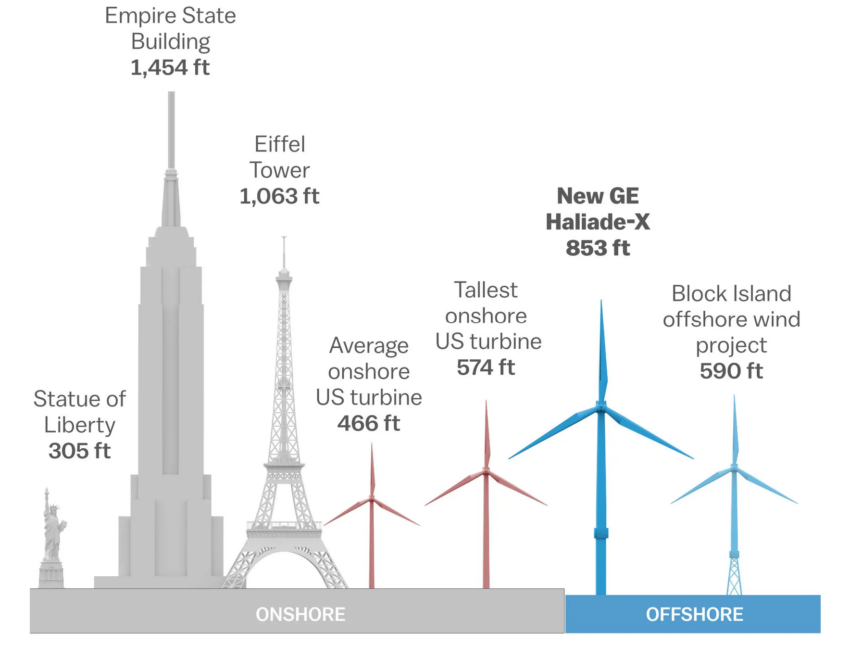About three years ago we started to see wind turbines get even more wind behind their sails. Here is the article. https://www.vox.com/energy-and-environment/2018/3/8/17084158/wind-turbine-power-energy-blades At the time the biggest, newest wind turbine blades that were not even out yet had a rotor diameter of 220 meters (~720 feet) and a total height of 260m (~850 feet). The model vox was talking about https://www.ge.com/renewableenergy/wind-energy/offshore-wind/haliade-x-offshore-turbine had a 10 MW max capacity at the time but is now up to 14MW with technological improvements made in the Nacelle over the last three years.
But wind power is about to make another leap forward with the new 15 MegaWatt Vestas V236 model that is looking to be commercialized later in 2022 https://www.vestas.com/en/products/offshore/V236-15MW/V236-15MW. This massive wind turbine has a rotor diameter of 236 meters (hence the name V236) or 774 feet for those still on backwards measurement systems. In other words, the rotor diameter is over 7% larger than the record breaking wind turbines we discussed in the 2019 article. While this may not sound like a lot, the result of this is a windswept area over 15% larger at 43,741 square meters versus the previous record setting 38,000 square meters. Given that the smaller turbines were able to increase their power output from only 10MW when they were first released three years ago to 14MW today. Just based on the windswept area alone this means that it might be possible for the 15MW current capacity to improve to at least 15% over the 14MW model. This current generation of wind turbines looks highly likely to reach past the 16MW range within the next year. In addition, if these companies are able to continue to improve the efficiency of the generators in the nacelle in the same way they have been able to with previous generations and at similar rates of improvement, this may indicate the possibility of a 40% improvement over the initial 15MW model. If this happens this would mean individual wind turbines achieving over 20MW capacities within the next three years! For context
Combine this increased nameplate capacity with improved capacity factors due to the higher tower heights and larger windswept areas and wind power has indeed fulfilled the predictions made by Vox three years ago. Wind power continues to be developed extensively and shows no signs of slowing.
Let’s look at this from another perspective. The largest power plant in the world is the Three Gorges Dam in China at 22,500 MW. See the following link for a great info graphic. https://solarpower.guide/solar-energy-insights/largest-power-plants-world. For the first time, we can also see that a wind farm (also in China) is on the list of the top 20 largest power plants by nameplate capacity. At number 9 with 7,965 MW of capacity the Jiuquan wind power plant (or farm) is massive. The reality is that these wind power farms can now achieve these sizes and power capacities with many fewer blades and towers with an 8,000 MW farm now being achievable with just 400 towers and 1,125 to produce more power than the Three Gorges dam. These seemingly small improvements in scale have radical cost implications when you start scaling the technology up.
The clock is ticking for fossil fuels and it cannot come soon enough. Here’s to another 3 years of massively ramped up wind farm installation and technological improvements. Of course we should not forget the need to ensure that all of these new turbines going in are recyclable or reusable in some form or another at the end of their service life. That is a topic for another post.
